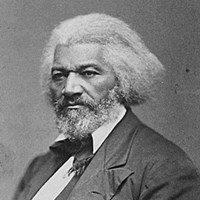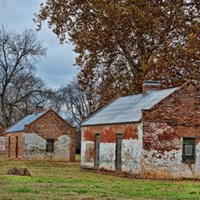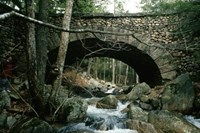- Lesson Plan (20)
- Field Trips (3)
- Distance Learning (2)
- Guest Speakers (1)
- Teacher Workshops & Other Programs (1)
- Traveling Trunk (1)
- Chaco Culture National Historical Park (2)
- Glacier National Park (2)
- Mesa Verde National Park (2)
- Acadia National Park (1)
- Arches National Park (1)
- Aztec Ruins National Monument (1)
- Cane River Creole National Historical Park (1)
- Canyon de Chelly National Monument (1)
- Charles Young Buffalo Soldiers National Monument (1)
- Show More ...
- Social Studies (21)
- Science (19)
- Literacy and Language Arts (8)
- Math (2)
Showing 28 results for engineer ...
Engineering a Better Future Virtual Field Trip
- Type: Distance Learning
- Grade Levels: Upper Elementary: Third Grade through Fifth Grade

Crushed fingers, broken legs, cuts and bruises … these were just some of the injuries suffered by 19th-century mill workers as they operated large, dangerous machines. Students will examine the Boott Cotton Mills’ looms and apply the engineering design process to identify safety problems and propose possible solutions. Using breakout groups and collaboration technology, students will design a safer loom by applying modern solutions to a historical problem.
- Type: Lesson Plan
- Grade Levels: Middle School: Sixth Grade through Eighth Grade
Going-to-the-Sun Road: A Model of Landscape Engineering - A Teaching with Historic Places Lesson Plan
- Type: Lesson Plan
- Grade Levels: High School: Ninth Grade through Twelfth Grade

Using the Going-to-the-Sun Road in Glacier National Park in Montana, this lesson plan allows students to identify problems encouraged in designing and building Going-to-the-Sun road and analyze the role of Frank A. Kittredge in planning the road. Students will use historic maps, readings, photographs and drawings to describe and evaluate arguments for building roads to provide access to Glacier National Park and other backcountry and wilderness regions.
Mars Traveling Trunk
- Type: Traveling Trunk
- Grade Levels: Upper Elementary: Third Grade through Fifth Grade
Journey through time and space, through the geography and geology of sand dunes, and the feats of engineering that make such exploration possible.
Protecting the Water
- Type: Field Trips
- Grade Levels: Middle School: Sixth Grade through Eighth Grade

This program explores the ways that Hot Springs National Park protects the natural water cycle and harnesses the water for human use. Students will explore different challenges from habitat protection to engineering that the park faces in protecting the 143-degree thermal water for public use. Designed for 5th and 6th grade Earth Science and Engineering. Advanced programs may be used for High School programs.
Virtual: Grades 3-5: Carriage Road ABCs: Architects, Bridges, and Carriages!
Plant Adaptations
Meeting the Fire Triangle
- Type: Lesson Plan
- Grade Levels: Upper Elementary: Third Grade through Fifth Grade
Statue of Liberty Pedestal and Museum: Self-Guided Tour
- Type: Field Trips
- Grade Levels: Middle School: Sixth Grade through Eighth Grade

This self-guided program will tour you through the Statue of Liberty’s lobby, museum and observation deck. As you approach the statue think about how the statue could have changed over the years, inside and out. Think about the engineering that when into supporting a statue of this size in windy New York Harbor.
- Type: Lesson Plan
- Grade Levels: Upper Elementary: Third Grade through Fifth Grade

This lesson is based on the National Register of Historic Places documentation for “The Stockade” and “Florence National Cemetery,” part of the “Civil War Era National Cemeteries MPS;" and on archival and archeological research sponsored by the U.S. Department of Veterans Affairs, National Cemetery Administration (NCA), conducted by archeologists with MACTEC Engineering and Consulting, Inc. (MACTEC).
Ranching, Roads and Rivers, Then and Now
- Type: Teacher Workshops & Other Programs
- Grade Levels: Graduate Level (Masters, PhD)

Join the staff at Grant-Kohrs Ranch for a five-day Science, Technology, Engineering, Art and Mathematics (STEAM) continuing education workshop for teachers. Gain an in-depth understanding of the natural and cultural resources at GRKO and incorporate that information into educational curricula. Explore new ideas and strategies on best practices for cross-curricular design, incorporate Art into STEM lessons and add to your collection of ready to use lessons.
Henry O. Flipper, Colored Cadet at West Point
- Type: Guest Speakers
- Grade Levels: Adult Education

Henry O. Flipper was born enslaved and became the first African American officer and graduate from the United States Military Academy at West Point in 1877. However, during his fifth year of service, on June 30, 1882, he was dishonorably discharged from the Army. Flipper fought to regain his honor for the rest of his life. He continued to serve as a public servant, working for the Department of the Interior as well as an engineer.
- Type: Lesson Plan
- Grade Levels: Middle School: Sixth Grade through Eighth Grade
Telling the Stories of Pu'uhonua o Hōnaunau
- Type: Lesson Plan
- Grade Levels: Middle School: Sixth Grade through Eighth Grade

Pu'uhonua o Hōnaunau contains many stories of past and present Hawaiian peoples. This lesson couples 3D virtual tours with oral histories, archeological data, and historical information to reveal and explore these narratives. Este plan de clase con actividades incluido también está disponible en español.
Frederick Douglass, The Educator of Anacostia: “Once you learn to read, you will be forever free.”
- Type: Lesson Plan
- Grade Levels: Middle School: Sixth Grade through Eighth Grade

Students will learn about Frederick Douglass’s passion for learning and sharing knowledge with the African-American community. They will use 3D printed replicas to practice skills in primary source research, critical thinking, discussion, and writing. Este plan de clase con actividades incluido también está disponible en español.
- Type: Lesson Plan
- Grade Levels: Middle School: Sixth Grade through Eighth Grade

Students will learn about the challenges that 19th- and 20th-century women faced when choosing a career path. They will then read a biography of Florence Hawley Ellis, one of the earliest American women to break into the male-dominated field of archeology. Este plan de clase con actividades incluido también está disponible en español.
- Type: Lesson Plan
- Grade Levels: Middle School: Sixth Grade through Eighth Grade

Ann Axtell was a prominent archeologist, artist, and author. Ann spent much of her time recording and painting architecture, petroglyphs and pictographs, landscapes, and expedition work. Many of her recording methods are still in use today by modern archeologists. Este plan de clase con actividades incluido también está disponible en español.
Scouts and Shovels: “Crashing the Gates” with Bertha Dutton
- Type: Lesson Plan
- Grade Levels: Middle School: Sixth Grade through Eighth Grade

Bertha Dutton was one of the first female archeologists who worked with the National Park Service. This lesson plan emphasizes her original methodologies and why her work was so important to both women’s history and cultural resource preservation. Este plan de clase con actividades incluido también está disponible en español.
What Did They Eat?: Archeology and Animal Bones
- Type: Lesson Plan
- Grade Levels: Middle School: Sixth Grade through Eighth Grade

This lesson illustrates how archaeologists use faunal analysis, or the study of animal bones, to explore what people in the past ate and how they obtained their food. By applying concepts of taxonomy and scientific classification, it demonstrates how archaeologists use both scientific methods and historical research to interpret past lifeways. Este plan de clase con actividades incluido también está disponible en español.






